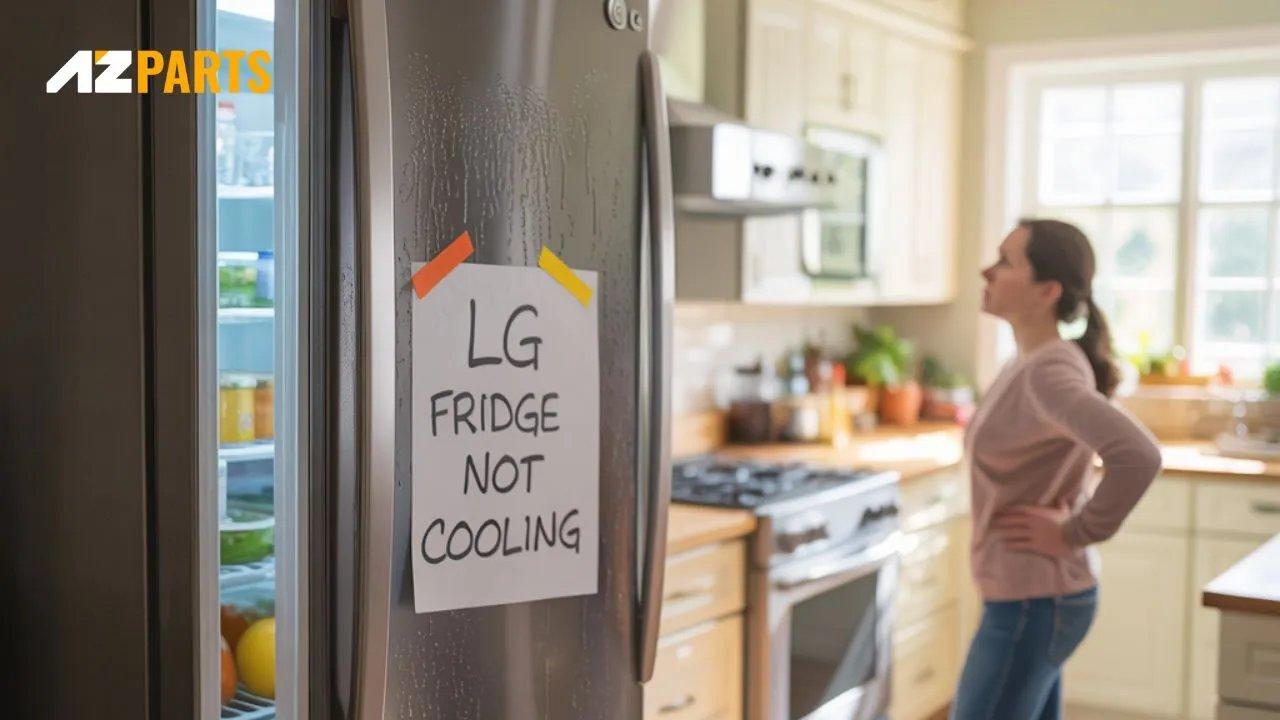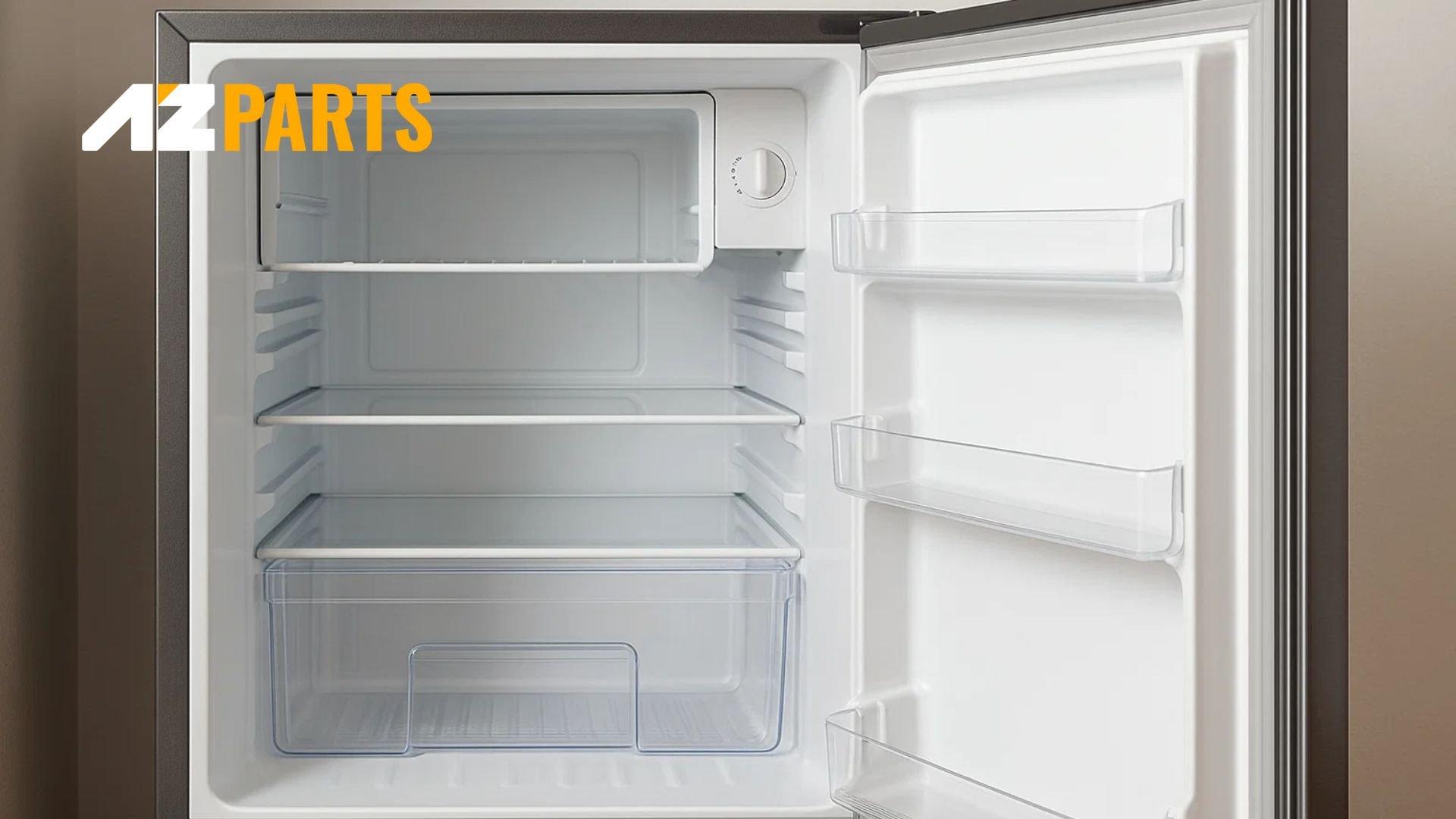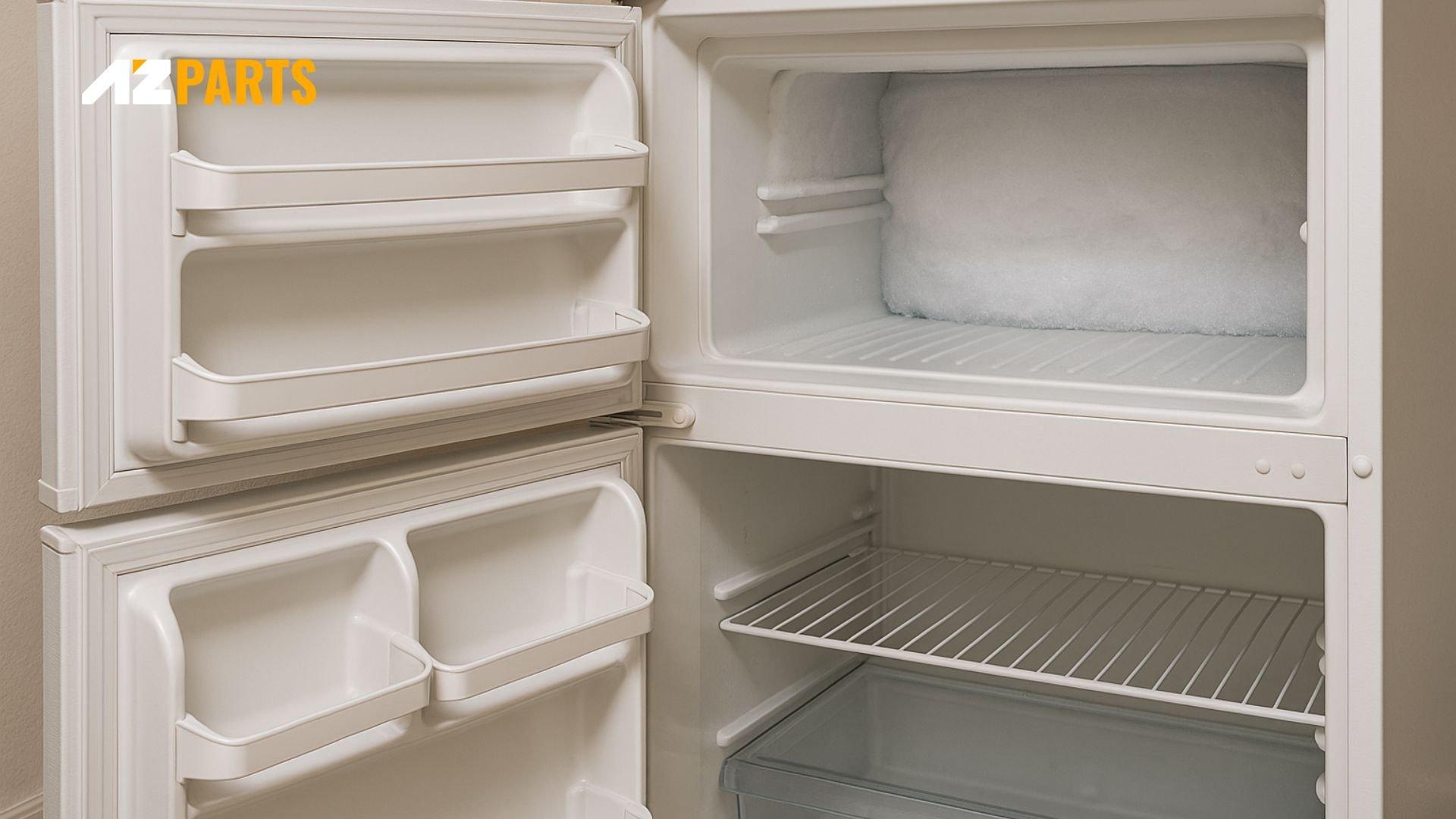Review
How to test & replace the start relay of the refrigerator compressor
AZparts Team
Updated on July 30, 2025
7 min read
The compressor start relay is a small but crucial part of your refrigerator’s cooling system. Its primary role is to help kickstart the compressor, which circulates refrigerant and keeps your fridge cool.
When the start relay malfunctions, the compressor may fail to run—leading to rising internal temperatures, spoiled food, and increased energy usage. If you're dealing with cooling issues, learning how to test the start relay is an essential first step in troubleshooting.
By testing this component properly, you can determine whether the problem lies with the relay itself or the compressor. Replacing a faulty start relay is often a quick and affordable fix that can restore normal cooling performance without the need for major repairs.
_1741917223.jpg&w=3840&q=75)
Signs Your Refrigerator Compressor May Be Failing
The compressor is the heart of your refrigerator’s cooling system—when it starts to fail, your appliance can quickly lose its ability to preserve food. Recognizing the early warning signs of a faulty compressor can help you act before the problem worsens. Here are the most common symptoms:
- Unusual Noises: A buzzing, rattling, or clicking sound coming from the back of the fridge is often the first sign of compressor trouble. Most modern refrigerators operate quietly, so any persistent noise is worth investigating.
- Inconsistent or Inadequate Cooling: If your fridge suddenly stops keeping food cold, or the temperature fluctuates unexpectedly, it could point to compressor failure. While other issues like a faulty refrigerator thermostat or door seal can also affect cooling, a failing compressor is one of the most serious culprits.
- Overheating or Warm Air Around the Fridge: Excessive heat behind or beneath the unit—especially near the compressor—could indicate it's overworking or on the verge of failure.
- Compressor Fan Issues: If the internal fan stops spinning or works intermittently, it can lead to poor coolant circulation. This reduces cooling efficiency and may eventually cause the compressor to overheat or shut down.
- Chemical or Burning Odor: A refrigerant leak may give off a sharp, chemical-like scent. In some cases, it can smell like burning rubber or plastic—both signs that demand immediate attention.
- Dirty Condenser Coils: When condenser coils are covered in dust and grime, the compressor must work harder to expel heat. Over time, this strain can cause the compressor to fail. Cleaning the coils every six months can extend your appliance's life.
- Electrical Failures: Water damage or power surges can affect the refrigerator’s control board, which regulates the compressor. Faulty signals from the board may prevent the compressor from turning on or functioning properly.
- Frequent Cycling On and Off: If your fridge turns on and off rapidly or runs in short bursts, it may be due to a malfunctioning start relay or an overheating compressor that’s shutting down prematurely.
If you notice any of these signs, it’s best not to wait. Contact a certified refrigerator technician to inspect and service your appliance. In many cases, compressor issues can be resolved quickly and cost-effectively—especially when caught early.
How to Test a Start Relay
If your refrigerator isn’t cooling properly, a faulty start relay could be the reason. This small component helps kick-start the compressor, which is essential for maintaining cold temperatures. Knowing how to test start relay can save you time, money, and a fridge full of spoiled food. Here’s how to do it yourself with parts from AZParts.
There are a few ways to test a start relay depending on its type. Use a multimeter to check for electrical continuity.
Testing a General Start Relay:
- Unplug the refrigerator to avoid electrical shock.
- Remove the relay cover on the side of the compressor.
- Detach the start relay and overload protector (they may be combined into one unit).
- Shake the relay gently.
- If it rattles, it may be broken.
- Use a multimeter to test the terminals for continuity.
- If there’s no continuity between the common and start terminals, the relay is likely bad.
Testing Electromechanical Relay EM:
- Step 1: With the relay in any position, check for continuity between terminals 1 and 2.
- If there is no continuity, replace the relay.
- Step 2: Hold the relay vertically with the coil side up, check for continuity between terminals 1 and 3.
- If there is no continuity, replace the relay and repeat Step 1.
- Step 3: Hold the relay vertically with the coil side down, check for continuity between terminals 1 and 3.
- If there is continuity, replace the relay.
Testing Electromechanical Relay F, EG, and PW:
- Step 1: Hold the relay vertically, coil down, check for continuity between terminals 10 and 11.
- If there is no continuity, replace the relay.
- Step 2: Hold the relay vertically, coil up, check for continuity between terminals 10 and 11.
- If there is continuity, replace the relay and repeat Step 1.
Note: Some relays include an internal overload protector. If this component is blown, your multimeter may show no continuity at all.
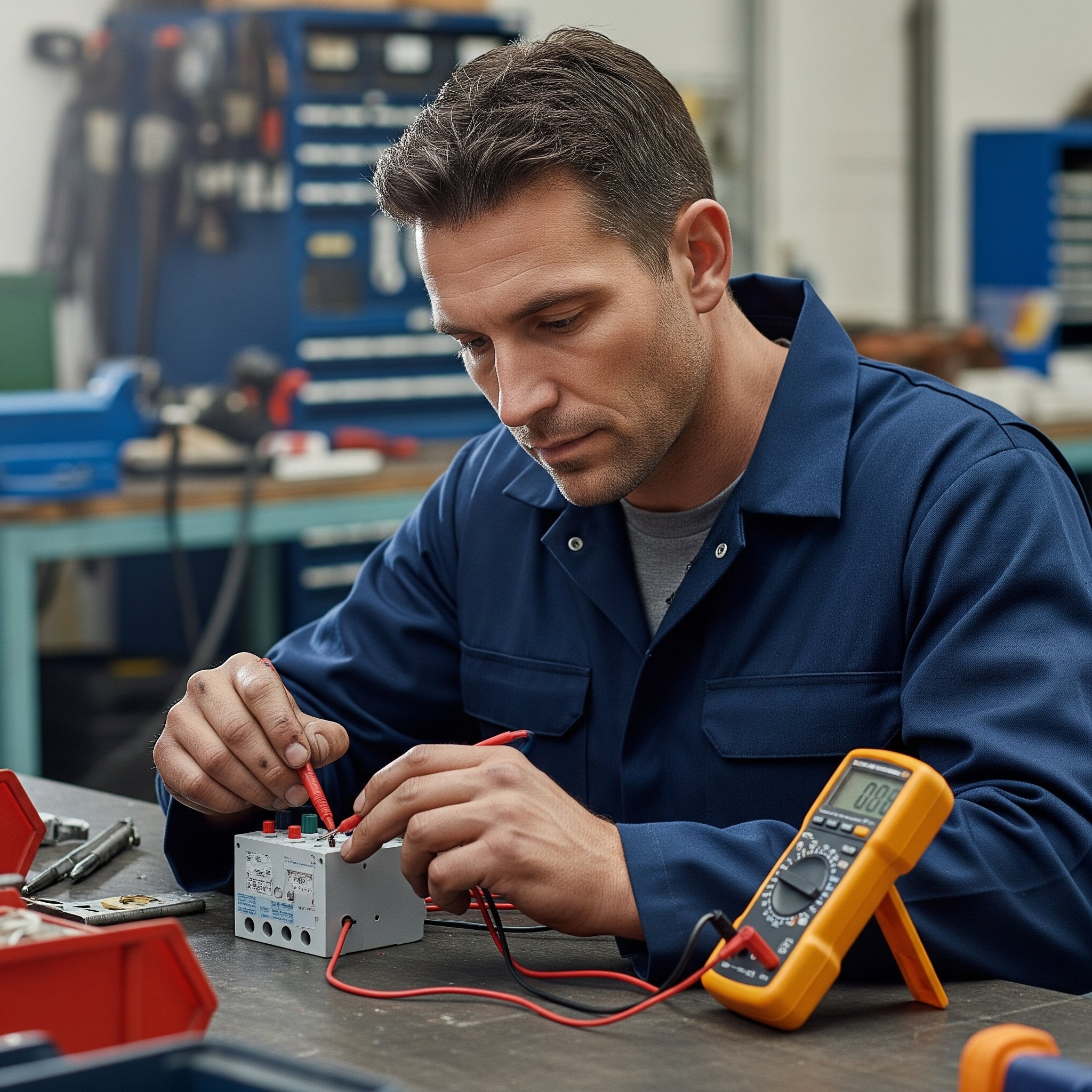
How to Replace a Faulty Start Relay
The compressor start relay is a small but critical component that helps the compressor kickstart when the fridge cycles on. If your fridge isn’t cooling properly or is making clicking sounds, a faulty relay could be the cause. Replacing it is a manageable DIY task for many homeowners.
Tools & Materials You’ll Need:
- Flathead screwdriver
- Needle-nose pliers (optional)
- Multimeter (to test the relay, optional)
- Replacement start relay (check compatibility with your fridge model)
- Safety gloves (recommended)
Step-by-Step Instructions:
Step 1. Locate the Compressor and Relay
- Remove the rear access panel at the bottom back of the fridge using a screwdriver.
- The compressor is a black, cylindrical component with wires connected to it.
- The start relay is usually a small plastic box attached to the side of the compressor.
Step 2. Remove the Old Start Relay
- Carefully disconnect any wires attached to the relay. (Take a picture beforehand so you can reconnect them properly.)
- Gently pull the relay straight off the compressor terminal. Some models may also have a cover or clip that needs to be removed first.
Step 3. Check for Damage or Burning Smell
- If the relay rattles when shaken, is discolored, or has a burnt odor, it’s definitely faulty.
Step 4. Install the New Start Relay
- Line up the new relay’s prongs with the compressor terminal and firmly push it in.
- Reconnect the wires to the proper terminals (refer to the photo you took).
Step 5. Reassemble and Test
- Reattach the back panel and plug in the refrigerator.
- Listen to hear if the compressor kicks on. Let the fridge run for a few hours and check if it begins cooling properly.
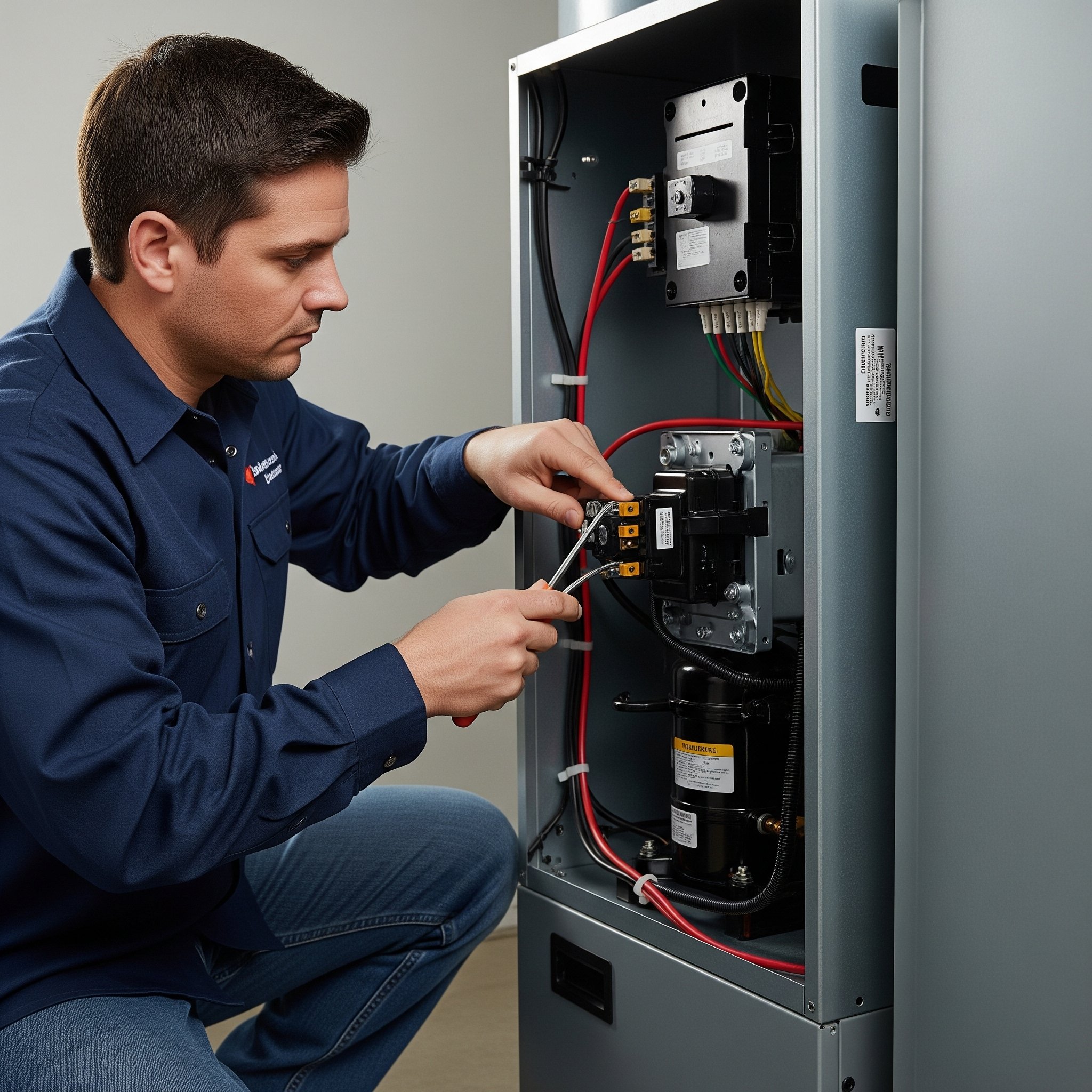
Frequently Asked Questions About Starting Relays
1. Can I fix a starting relay?
No. Starting relays aren’t designed to be repaired. If damaged, they must be replaced.
2. Is it easy to replace a starting relay?
Yes, if you have basic knowledge and the right tools. Most plug-in relays are simple to replace without professional help.
3. How much does it cost to replace a starting relay?
Typically around $20–30 for the part. If you DIY, that’s your only cost.
4. How long does a starting relay last?
A quality relay can last over 100,000 miles (in vehicles) or several years in appliances, depending on usage and power surges.
5. Is a starting relay the same as a starter solenoid?
Not exactly.
- The starter relay is usually located in the fuse box and controls power to the solenoid.
- The starter solenoid is mounted on the starter motor itself and engages the engine or motor to start.
Final Thoughts
If your Frigidaire parts, Whirlpool parts, or Kenmore refrigerator isn’t cooling, don’t panic. A bad compressor start relay is a common issue and often the root cause of refrigerator compressor problems. Look out for clicking sounds, warm fridge despite working lights, an overheating compressor, or frequent circuit trips. Testing and replacing the relay is straightforward—and could save your fridge from costly repairs.
The good news? Testing and replacing a bad relay is a relatively quick and inexpensive DIY fix—and far more affordable than replacing the entire compressor.
At AZParts, we offer a wide selection of high-quality, OEM-compatible refrigerator parts, including compressor start relays, capacitors, temperature sensors, evaporator fans, and more. Whether you're repairing a broken relay or troubleshooting other cooling issues, AZParts has everything you need to keep your refrigerator running at its best.
Explore our full refrigerator parts collection today—and save your fridge (and your wallet) from major repair bills tomorrow.
Refrigerator
Further Reading
Further Reading

